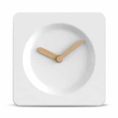Do minor flaws in your teeth bother you every time you’re about to smile? Perhaps it’s that persistent chip you’ve had since childhood from a fall or a sports mishap. If you can relate, don’t worry because there is a simple solution – dental bonding. Learn how dental bonding can help fix those pesky smile imperfections such as chipped teeth, minor cracks, gaps, and discolouration for a flawless smile. In this article, we’ll walk you through the dental bonding procedure, exploring its benefits, and helping you determine whether it’s the right treatment for you.
Dental Bonding Procedure
Dental bonding is used to repair or enhance the appearance of teeth by applying a tooth-coloured resin material to the affected tooth or teeth. It’s a quick procedure which can generally be completed in a few visits with minimal tooth preparation and no anaesthesia.
The dental bonding procedure is completed in several steps. They include:
Evaluation and Treatment Planning
The process begins with an initial consultation with your dentist to discuss your concerns and goals for improving your smile. Your dentist will perform a thorough examination of your teeth to assess if dental bonding is suitable for your specific dental issues.
Tooth Preparation
The first step is to select the shade of resin that closely matches your natural tooth colour. Your dentist will then prepare the tooth or teeth for bonding using a mild etching solution. This creates a slightly textured surface that helps the bonding material adhere better to the tooth.
Bonding Material Application
A putty-like, tooth-coloured resin is applied and sculpted to help correct the chips, fractures or any other cosmetic dental issues you want to fix.
Curing and Polishing
Once the bonding material is in the desired shape, your dentist will use a special light to harden or “cure” the material. The light activates a chemical in the resin that causes it to harden and bond to the tooth’s surface.
After the bonding material has cured, your dentist will trim and shape the bonded area to ensure a natural appearance and proper bite alignment. The bonded tooth will then be polished for a smooth and natural finish.
Final Adjustments
Lastly, your bite alignment will be checked, and any necessary adjustments made to ensure your comfort and proper dental function.
Benefits of Dental Bonding for Chipped Teeth
Some of the benefits of dental bonding include:
Repairing Minor Dental Imperfections
Dental bonding is an excellent option for fixing minor flaws in teeth, such as chipped or cracked teeth, as well as covering stains or discolourations that do not respond to teeth whitening treatments.
Preserving Natural Tooth Structure
As dental bonding requires minimal tooth preparation, it helps to preserve the natural structure of your teeth while still allowing you to improve your smile. This makes it a preferred treatment for people looking for less extensive cosmetic dental procedures.
Quick and Convenient Treatment Option
Dental bonding can usually be completed in several dental visits, making it a time-efficient option for an immediate smile transformation.
At Boon Dental, we first evaluate the condition of your teeth to ensure there’s no decay or if any other treatment is needed to restore their health before moving forward with dental bonding. For patients with no dental issues, composite bonding can generally be completed in one or two appointments.
Minimally Invasive
The dental bonding procedure is less invasive and usually requires little to no removal of the tooth’s enamel. Unlike some other cosmetic treatments, such as veneers or crowns, bonding is also a reversible procedure.
Cost Effective
Compared to other cosmetic dental treatments like veneers or crowns, dental bonding is generally more affordable, making it accessible to a wider range of patients seeking cosmetic improvements.
Versatile
Dental bonding can address various cosmetic concerns, including fixing chips, closing small gaps, reshaping teeth, and masking discolourations, which makes it a flexible cosmetic dental treatment option.
Aftercare and Maintenance of Dental Bonding
Proper aftercare and maintenance are essential for preserving the longevity and appearance of dental bonding. While bonded teeth are durable, they require regular care to ensure they stay in optimal condition. Here are some aftercare tips and maintenance guidelines for dental bonding:
Oral Hygiene
Brush your teeth at least twice daily using a soft-bristled toothbrush and fluoride toothpaste. Gently clean your teeth along the gum line to prevent plaque buildup and stains.
Flossing
Floss your teeth daily, including the bonded ones, to remove food particles and plaque from between the teeth. Be cautious while flossing around the bonded areas to avoid dislodging the material.
Avoid Staining Substances
Limit the consumption of staining substances like coffee, tea, red wine, and tobacco. These can cause discolouration on the bonding material and your natural tooth enamel over time.
Avoid Biting on Hard Objects
Refrain from biting on hard objects, such as ice or pens, as well as opening packages or bottles with your teeth. These habits can chip or damage the bonding material.
Mouthguards
Wear a mouthguard during contact sports to prevent damage to your bonded and natural teeth. A custom-fitted mouthguard can help protect your bonded teeth and soft mouth tissues from injuries or dental trauma.
Regular Dental Check-ups
Schedule and attend regular dental check-ups and cleanings every six months. This allows your dentist to examine the condition of your bonded teeth and address any issues that may arise. Regular dental checkups also help detect emerging dental problems that may not yet be visible or have any symptoms for timely treatment.
Teeth Grinding (Bruxism)
If you have a habit of grinding or clenching your teeth, let your dentist know before the dental bonding procedure. Bruxism can put excessive pressure on bonded teeth, leading to premature wear or damage.
Touch-up and Replacement
Dental bonding is durable, but the material may wear down or become discoloured over time. If necessary, your dentist can perform touch-ups or replace the bonding material to maintain your smile’s appearance.
Consult with Your Dentist
If you experience any discomfort or sensitivity or notice changes in the appearance of your bonded teeth, consult your dentist promptly. Early intervention can prevent potential problems from worsening.
Consider Veneers or Crowns for Extensive Repairs
While dental bonding is a popular option for minor imperfections, for more extensive dental issues, such as larger chips or significant discolourations, your dentist may recommend dental veneers or crowns for a more durable and long-lasting solution.
Ready for a Flawless Smile?
At Boon Dental, we offer a range of dental treatments tailored to your aesthetic and oral health requirements. With gentle support and guidance, the latest techniques and a warm environment designed for your comfort, we’re here to help you achieve a healthy and vibrant smile. Book a consultation today.











